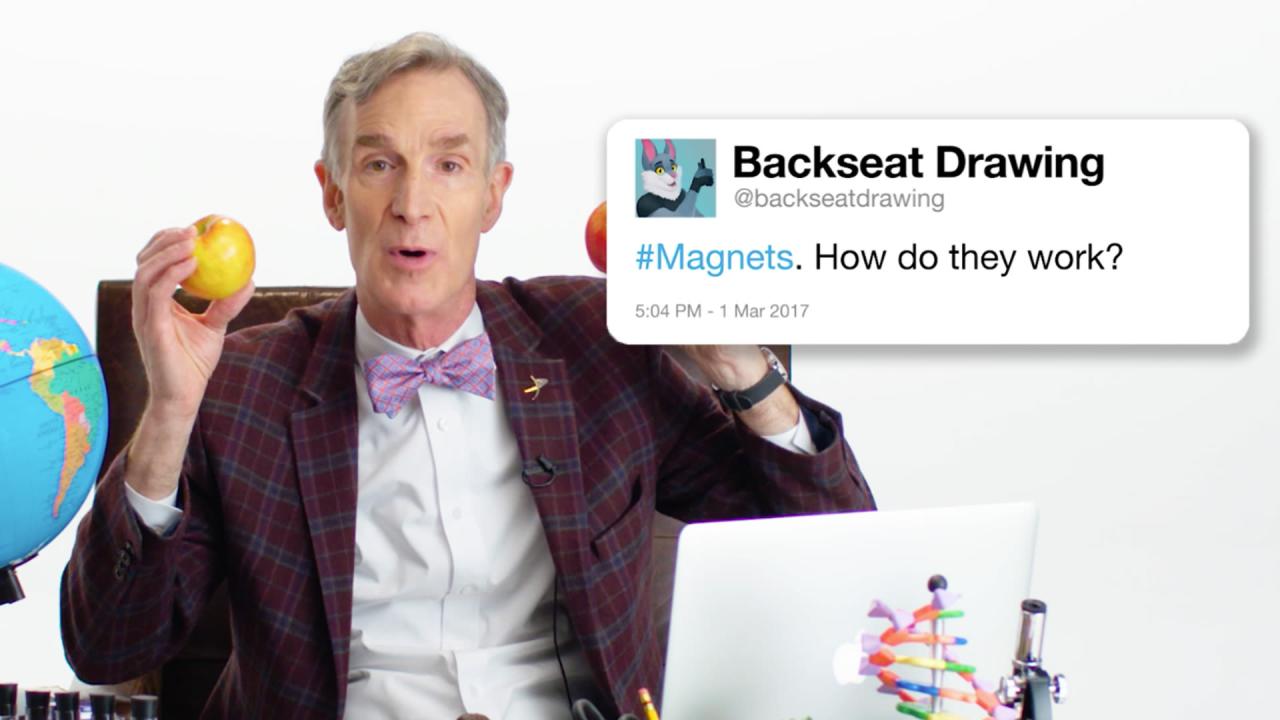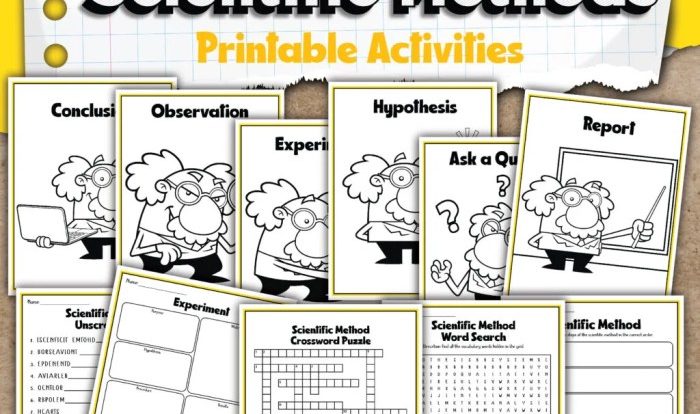Bill nye wave video quiz answers – Dive into the fascinating world of waves with Bill Nye’s Wave Video Quiz Answers! This comprehensive guide delves into the key concepts of wave properties, behavior, interactions, and applications, providing a deep understanding of this fundamental aspect of physics.
From the intricacies of wavelength and frequency to the captivating phenomena of interference and diffraction, this guide unravels the secrets of waves, making them accessible and intriguing for all.
Bill Nye’s Wave Video Quiz: Introduction
Get ready to dive into the fascinating world of waves with Bill Nye’s Wave Video Quiz! This engaging and informative quiz will test your knowledge of wave properties, behaviors, and real-world applications.
Throughout the quiz, you’ll encounter various types of waves, from mechanical waves that require a medium to electromagnetic waves that can travel through a vacuum. You’ll explore concepts like wavelength, frequency, amplitude, and wave interference, gaining a deeper understanding of how waves interact with each other and their surroundings.
Key Concepts Covered
- Types of waves (mechanical and electromagnetic)
- Wave properties (wavelength, frequency, amplitude)
- Wave behavior (reflection, refraction, diffraction, interference)
- Real-world applications of waves (sound, light, communication)
Wave Properties and Behavior
Waves are characterized by distinct properties that influence their behavior. Understanding these properties is crucial for comprehending wave phenomena.
Key Properties of Waves
Key wave properties include:
- Wavelength (λ):The distance between two consecutive crests or troughs of a wave.
- Frequency (f):The number of wave crests passing a fixed point per unit time.
- Amplitude (A):The maximum displacement of a wave from its equilibrium position.
Influence of Wave Properties on Behavior
These properties affect wave behavior in various ways:
- Wavelength:Determines the wave’s speed and diffraction patterns.
- Frequency:Governs the wave’s energy and pitch.
- Amplitude:Indicates the wave’s intensity or loudness.
Types of Waves
Waves can be classified into two main types:
- Transverse Waves:Particles oscillate perpendicular to the wave’s direction of propagation (e.g., light waves).
- Longitudinal Waves:Particles oscillate parallel to the wave’s direction of propagation (e.g., sound waves).
Wave Interactions: Bill Nye Wave Video Quiz Answers

Waves, as they propagate through a medium, can interact with each other and with obstacles. These interactions result in various phenomena, such as interference, diffraction, and reflection.
The principles governing these interactions stem from the wave nature of light and the superposition principle. The superposition principle states that when two or more waves overlap, the resulting displacement at any point is the sum of the individual displacements caused by each wave.
Interference
Interference occurs when two or more waves of the same frequency and wavelength combine. Constructive interference occurs when the crests of the waves align, resulting in a larger amplitude. Destructive interference occurs when the crest of one wave aligns with the trough of another, resulting in a smaller amplitude or even complete cancellation.
Interference is observed in various phenomena, such as the colorful patterns seen in soap bubbles and the diffraction grating used in spectrometers.
Diffraction
Diffraction is the spreading out of waves as they pass through an aperture or around an obstacle. When a wave encounters an obstacle, it bends around the edges and spreads out into the region behind the obstacle.
Diffraction is responsible for the bending of light around corners and the ability of radio waves to travel beyond the line of sight.
Reflection
Reflection occurs when a wave encounters a boundary between two media and bounces back into the original medium. The angle of reflection is equal to the angle of incidence.
Reflection is used in mirrors, telescopes, and other optical devices to control the direction of light.
Applications of Wave Phenomena
Waves have a wide range of applications in various fields of science and technology. They are used in medicine, communication, energy production, and many other areas.
In medicine, waves are used for diagnostic and therapeutic purposes. Ultrasound waves are used to create images of internal organs and tissues, while X-rays are used to diagnose broken bones and other injuries. Microwaves are used to heat tissues for therapeutic purposes, such as in the treatment of arthritis and muscle pain.
Communication
Waves are also essential for communication. Radio waves are used to transmit information over long distances, while microwaves are used for short-range communication, such as in cell phones and Wi-Fi networks. Light waves are used for optical fiber communication, which can transmit large amounts of data at very high speeds.
Energy Production
Waves are also used in energy production. Solar panels convert light waves into electricity, while wind turbines convert the kinetic energy of wind into electricity. Waves in the ocean can also be used to generate electricity through wave energy converters.
Quiz Answers and Explanations
Here are the answers to the questions in Bill Nye’s Wave Video Quiz, along with explanations for each answer.
Wave Properties and Behavior, Bill nye wave video quiz answers
- What is the difference between a transverse wave and a longitudinal wave?
In a transverse wave, the particles of the medium vibrate perpendicular to the direction of wave propagation. In a longitudinal wave, the particles of the medium vibrate parallel to the direction of wave propagation.
- What is the relationship between wavelength, frequency, and wave speed?
The wavelength is the distance between two consecutive crests or troughs of a wave. The frequency is the number of crests or troughs that pass a given point in one second. The wave speed is the distance traveled by a wave in one second.
The relationship between these three quantities is: wave speed = wavelength × frequency.
- What is the Doppler effect?
The Doppler effect is the change in frequency of a wave that is observed by an observer who is moving relative to the wave source. If the observer is moving towards the wave source, the frequency of the wave will be higher than if the observer is moving away from the wave source.
Wave Interactions
- What is reflection?
Reflection is the bouncing back of a wave from a surface. When a wave encounters a surface, some of its energy is reflected back in the opposite direction.
- What is refraction?
Refraction is the bending of a wave when it passes from one medium to another. When a wave passes from a medium with a higher wave speed to a medium with a lower wave speed, it will bend towards the normal.
When a wave passes from a medium with a lower wave speed to a medium with a higher wave speed, it will bend away from the normal.
- What is diffraction?
Diffraction is the spreading out of a wave as it passes through an aperture or around an obstacle. When a wave passes through an aperture, it will spread out in all directions. When a wave passes around an obstacle, it will bend around the obstacle and continue to propagate in all directions.
Applications of Wave Phenomena
- How are waves used in medicine?
Waves are used in medicine for a variety of purposes, including imaging, diagnosis, and treatment. Ultrasound waves are used to create images of internal organs and tissues. X-rays are used to create images of bones and teeth. Magnetic resonance imaging (MRI) uses radio waves to create images of the brain and other organs.
- How are waves used in communication?
Waves are used in communication to transmit information from one place to another. Radio waves are used to transmit radio and television signals. Microwaves are used to transmit cell phone signals. Infrared waves are used to transmit remote control signals.
- How are waves used in energy production?
Waves are used in energy production to generate electricity. Solar panels use sunlight to generate electricity. Wind turbines use the wind to generate electricity. Hydroelectric dams use the flow of water to generate electricity.
Essential Questionnaire
What is the purpose of Bill Nye’s Wave Video Quiz?
The quiz aims to assess understanding of wave concepts covered in the accompanying video, reinforcing key principles and encouraging further exploration.
What types of waves are discussed in the quiz?
The quiz covers both transverse waves, such as light and water waves, and longitudinal waves, such as sound waves.
How are wave interactions explained in the quiz?
The quiz explores interference, diffraction, and reflection, illustrating how waves behave when they encounter obstacles or interact with each other.

